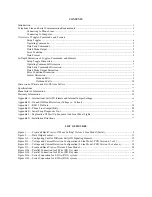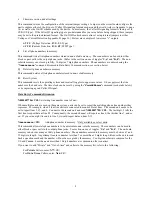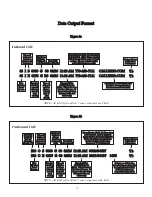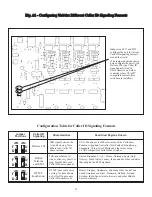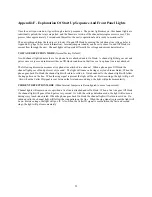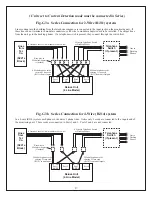
14
Appendix A - International Caller ID formats and Internal Jumper Settings
Caller ID is a data signal generated by the phone company's central office (CO). The type of Caller ID signal that
will be sent by a phone company will depend on the type of equipment in use at their CO.
Caller ID signaling formats vary throughout the world. At present, there is four basic formats with local variations
of each format type. By setting the proper combination of internal jumpers (shunts), the Whozz Calling? unit can
capture any of these four basic Caller ID signaling formats. The four basis formats are:
1. Bellcore 202 - USA Type. Sent in many countries. FSK sent between the 1
st
and 2
nd
ring cycle.
2. British Telecom – Only sent in United Kingdom. FSK sent before the 1
st
ring cycle.
3. ETSI - Sent primarily in Western Europe. FSK sent after very short 1
st
ring.
4. DTMF - Sent in regions that use older CO equipment. DTMF (touch-tones) sent before the 1
st
ring.
NOTE: Refer to the table in Fig. A1 for more information on known formats in particular countries.
The standard factory setting for Whozz Calling? Deluxe units is to capture Bellcore 202 type Caller ID. If the
signaling format was determined in advance of the unit being shipped, the unit may be set for an alternate format.
In order to configure the unit to a different Caller ID signaling format, the top of the enclosure must be removed and
shorting jumpers moved on the circuit board. Use the following steps and refer to Fig. A1 on the next page.
1. Remove power to the unit.
2. Remove the top of the enclosure by first removing the two Phillips head screws on the bottom of the unit.
3. Slide the top of the enclosure off.
4. Locate the shorting jumpers on the circuit board used for Caller ID signaling formats using Fig. A1.
5. Slide off the appropriate jumper(s) and reconnect as per the table below the diagram.
6. Replace the top of the enclosure and replace the two screws.

